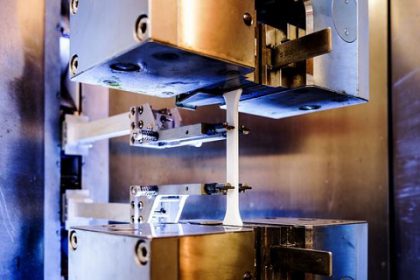 LANXESS at the VDI Congress “Plastics in Automotive Engineering”, April 3 – 4, 2019, Mannheim, Congress Center Rosengarten will Focus on new mobility and the substitution of polyamide 66, to insist: e-Powertrain team for electromobility founded and Newly developed, fatigue resistant polyamide 6 types
LANXESS at the VDI Congress “Plastics in Automotive Engineering”, April 3 – 4, 2019, Mannheim, Congress Center Rosengarten will Focus on new mobility and the substitution of polyamide 66, to insist: e-Powertrain team for electromobility founded and Newly developed, fatigue resistant polyamide 6 types
Electromobility – growing market
LANXESS set up the “e-Powertrain team” in response to the tremendous application potential of its polyamides and polyesters in the market for forms of new mobility. The team helps customers from the international automotive industry to choose tailor-made application-specific materials for electric vehicles. “We also support our partners throughout the entire development chain for their components, for example with engineering services for the component design like moldflow calculations, structure simulations and tests on finished parts,” says Julian Haspel, who heads the global “e-Powertrain” team.
LANXESS sees a variety of important applications for its thermoplastics in the field of electromobility, including charging systems, inverters, electric motors, auxiliary systems (e.g. cooling pumps) and battery elements. Potential battery applications include cell holders, spacers, covers, module carriers and housing parts. Haspel: “Our thermoplastics are in many cases an alternative to conventional materials such as die-cast metals, for example in crash-relevant structural components of the battery. But there are also entirely new potential applications, for example with our electrically insulating but thermally conductive compounds.”
Support for substituting polyamide 66
LANXESS has recently observed increasing demand – mainly from the automotive industry – for alternatives to polyamide 66 due to the limited primary product capacities for this thermoplastic, which have led to supply bottlenecks and major price increases for compounds. “We are helping our customers to find alternative materials to secure a reliable and cost-effective supply and to minimize the technical risks involved in switching over to a new material. Our services include everything from innovative alternative materials and extensive service in aspects ranging from material data and applicationsupport to technical production support,” says Tim Albert, who heads a corresponding international team at HPM.
High-modulus polyamides for structural components
One example of a material innovation where polyamide 66 can in many cases be replaced is the new Durethan P (performance) polyamide 6 series. The products are extremely resistant to pulsating loads, even at the high temperatures inside the engine compartment. Their mechanical properties are similar to those of polyamide 66. “The substitution can usually be made using compounds with the same glass fiber content, which means that the components are not any heavier,” says Albert. At the VDI Congress, HPM will be showcasing from its product range two new examples featuring 50% and 60% glass-fiber reinforcement. Their high strength and rigidity make them ideal for the lightweight construction of battery components or other parts such as oil filter modules, chassis bearings, damper pistons and seats.
The future of the European automotive and plastics industries
LANXESS is also playing an active role in the congress program. Dr. Axel Tuchlenski, for example, who heads global product and application development at HPM, is one of the experts appearing in the panel discussion entitled “Innovations in the Automotive and Plastics Industry: Is Europe Running out of Time?”. The event will take place on April 3, 2019, at 9.45 a.m.
Forward-Looking Statements
This company release contains certain forward-looking statements, including assumptions, opinions, expectations and views of the company or cited from third party sources. Various known and unknown risks, uncertainties and other factors could cause the actual results, financial position, development or performance of LANXESS AG to differ materially from the estimations expressed or implied herein. LANXESS AG does not guarantee that the assumptions underlying such forward-looking statements are free from errors nor does it accept any responsibility for the future accuracy of the opinions expressed in this presentation or the actual occurrence of the forecast developments. No representation or warranty (expressed or implied) is made as to, and no reliance should be placed on, any information, estimates, targets and opinions, contained herein, and no liability whatsoever is accepted as to any errors, omissions or misstatements contained herein, and accordingly, no representative of LANXESS AG or any of its affiliated companies or any of such person’s officers, directors or employees accept any liability whatsoever arising directly or indirectly from the use of this document.













